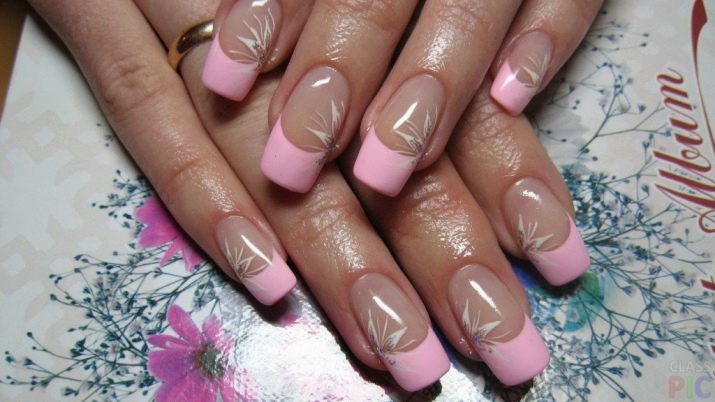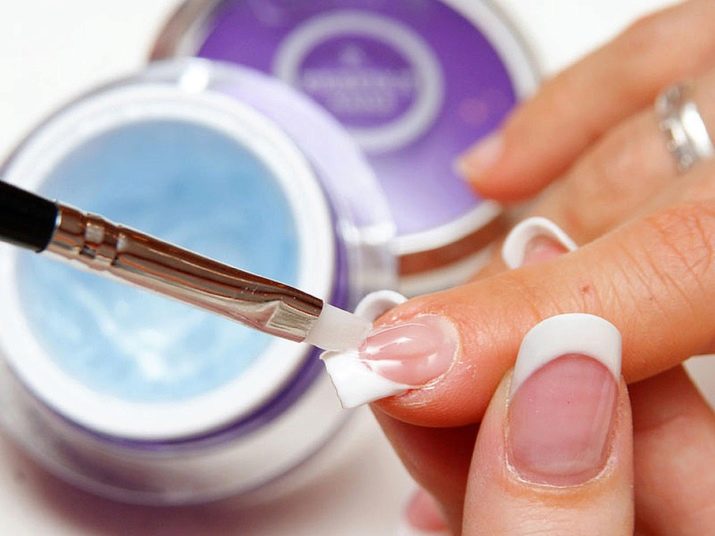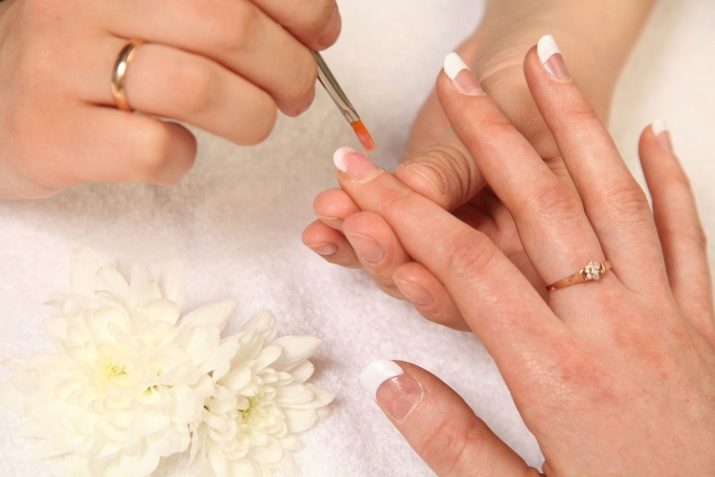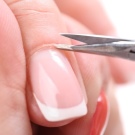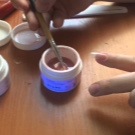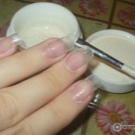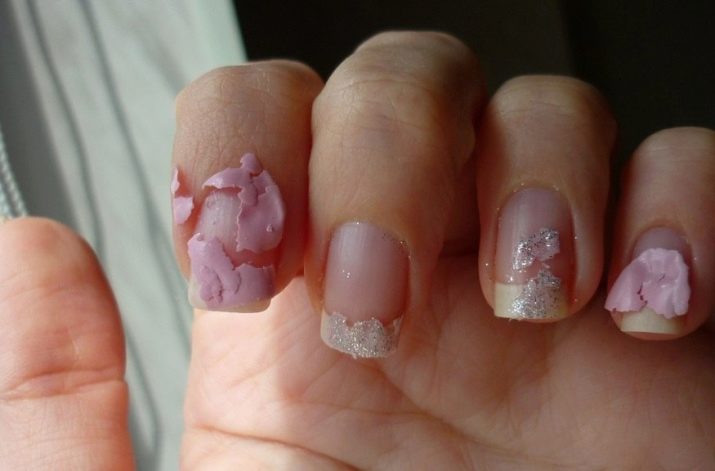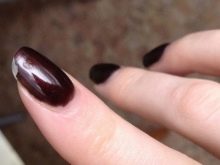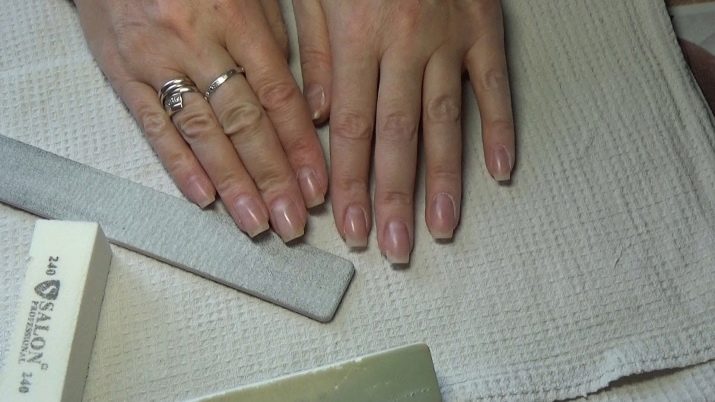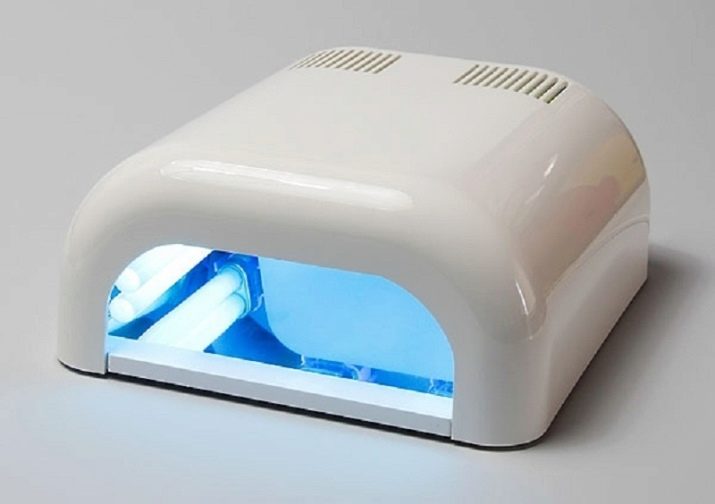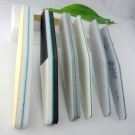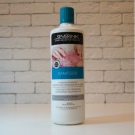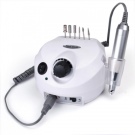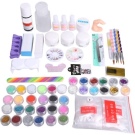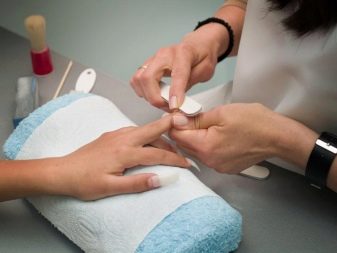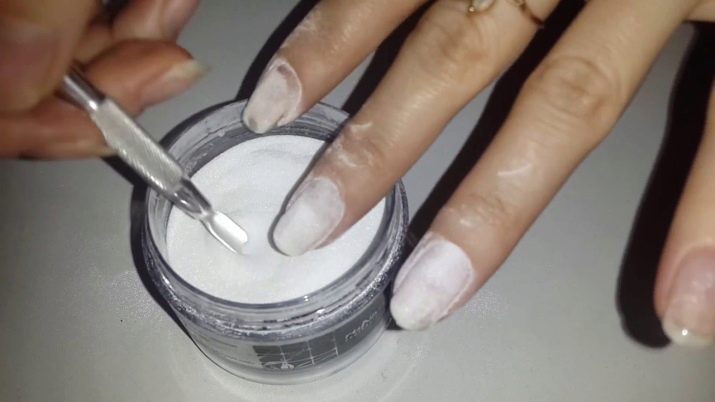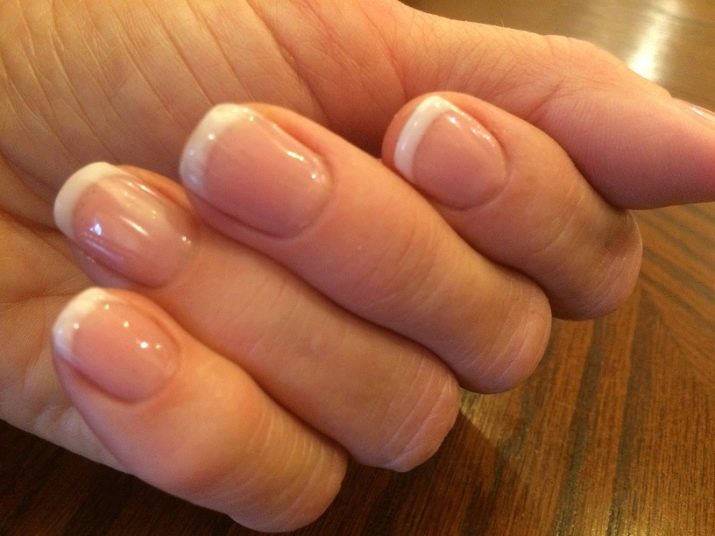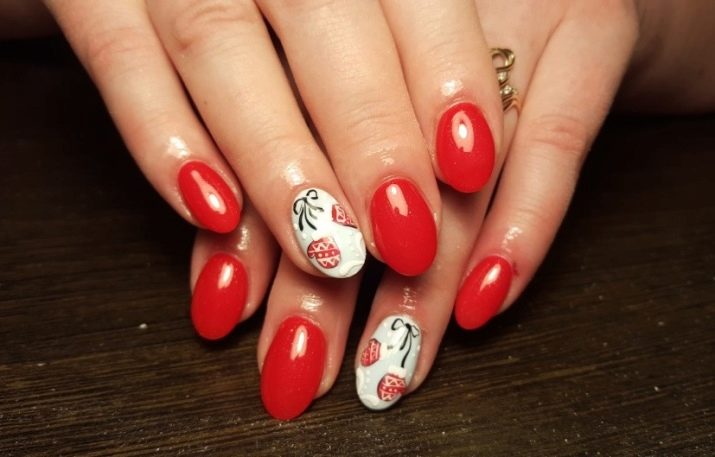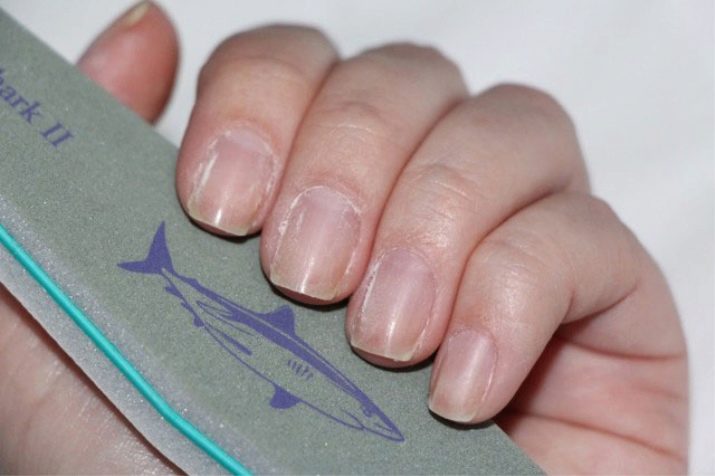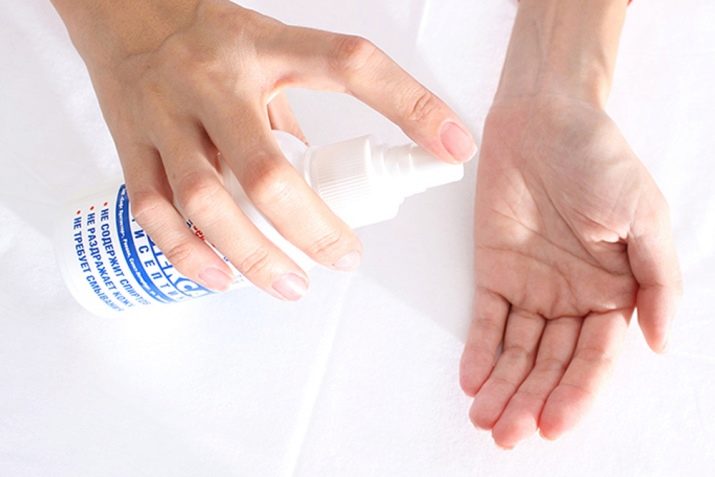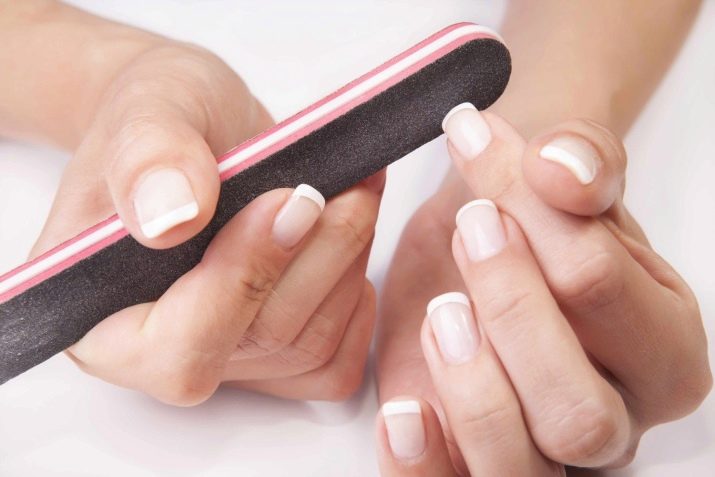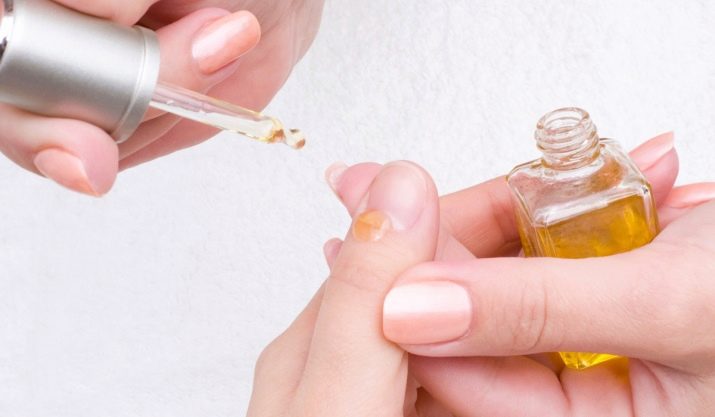Correction of extended nails: features and rules of the procedure
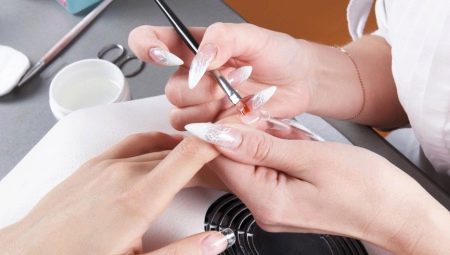
In the stream of daily affairs, work, household chores, women want to stay attractive and well-groomed. It has long been known the truth that the hands of a woman are her business card.
The beauty industry keeps pace with the times, constantly evolving. Not spared this trend and nail service.
Almost every second representative of the fair sex in the procedures for the care of hands resorts to nail extensions. This allows her for a long time not to worry about the attractiveness of a manicure, which saves time. In addition, the extension procedure helps to correct the not always attractive shape of the nail plate.
Extended nails require systematic care and correction, which consists in the complete or partial removal and replacement of previously applied artificial material, changing the shape of the nail plate and design.
Features of the procedure
Correction of accrued nails occurs in several stages, if we are not talking about the partial repair of cracks or scratches, and depends on the degree of wear and damage to the artificial material. The correction procedure includes not only updating the appearance and shape of the nails, but also general hand care.
Correction sequence.
- Before starting the procedure, the hands are thoroughly washed and treated with an antiseptic.
- Previously applied artificial coating is removed by sawing or router. Cutting depth depends on the type of correction.
- Reduces the length of the nail, and if desired, and its shape.
- The cuticle, side rollers are processed by hardware or a combination method (using tweezers and scissors to remove the cuticle).
- Removed pterygium to avoid further detachment of artificial material.
- Nails are degreased with primer.
- The base coat is applied, the surface of the nail plate is leveled and the material is dried (polymerized) in the lamp.
- A new design is created and covered with a finishing layer, which must be dried in the lamp for 3 minutes.
- At the end of the procedure, the cuticle of the fingers is treated with moisturizing oil.
When to do it?
When wearing artificial nails, a living nail continues to grow and the border with the superimposed polymer material becomes more and more obvious. Correction of extended nails should be carried out every 2-3 weeks. The duration of wearing depends on the natural characteristics of the growth of the nail plate, the accuracy of wearing artificial material.
Any mechanical damage, detachment of the enlarged nails can occur, and when worn for a long time, they are deformed and grinded along the free edge of the nail plate.
Peeling of the material, as a rule, occurs at the side rollers. There may be a lot of reasons for this, but most often it is: improperly selected artificial material, poorly treated nail surface before applying the base coat, daily mechanical load on the nail plate.
Types of correction
There are several types of correction nail extensions. From the amount of work to be done in the implementation of the correction distinguish small, medium and large correction.
- Minor correction is carried out with minor damage, chipping of the material, detachment, with a small regrowth of a living nail.
- The average correction is carried out when the nail grows by 3-5 mm. In this case, a partial removal (cut) of artificial material with the correction of the shape of the nail and the removal of damage.
- A large correction includes the complete removal of artificial material, the processing of nails and the application of a new artificial material with the design of a new plate shape. With this kind of correction, nail art and the shape of the nail change.
How to correct manicure at home?
Correction of capacity - it is quite tedious and will require time, special tools, materials and skills.
But to make it even a non-professional. The main thing is to follow the steps of correction and show maximum accuracy. Then the result will surely please.
For the correction will require:
- antiseptic;
- nail files;
- frezer;
- primer;
- base coat;
- color gel;
- topcoat;
- manicure tools;
- UV lamp;
- moisturizing oil.
There are features of the correction depending on the polymer, which was done building.
Gel
- Correction of nails, accrued with gel, begins, as in the case of extension, with the disinfection of hands and nail plates.
- Next, nail file or router correctly and carefully, without damaging the cuticle, remove about half of the previously laid artificial material; The cuticle can be removed with a wand or a manicure can be made by removing the extra skin.
- An overgrown living nail should also be carefully filed, removing the glossy layer, so that in the future the expandable material can fit tightly.
- After trimming the nails are treated with pusher and degreased with a primer.
- Further, artificial material is applied by stretching a drop over the entire surface of the nail and dried in an ultraviolet lamp. It is important to paint over all the voids on the nail plate and give the correct shape to the extensible material so that the nails look aesthetic later on.
- After applying the gel, it is possible to gently file the flaws in the nail file and hide unwanted smudges.
- The design of the manicure is updated or completely changed, the final layer of the gel is applied and polymerized in an ultraviolet lamp.
Acrylic
Correction of artificial nails, created by acrylic, has its own distinctive features. With such a correction, a lamp for the polymerization of the material is no longer needed, and the work on extension and correction is carried out with acrylic powder.
The rest of the correction steps are identical:
- hands are sanitized;
- production of previously applied material is made;
- the surface of the nail plate is degreased and the acrylic is laid out with a natural lint brush;
- formed nail should dry for 4 minutes;
- nailing the surface of the nail and polishing;
- to obtain a glossy finish surface is covered with a finishing coating.
Shellac
For several years Shellac has gained great popularity in the beauty industry. It preserves the natural appearance of the nail plate and creates a resistant coating. When using shellac, the nail plate does not grow and lengthen; they only strengthen the nails and give them a beautiful and well-groomed appearance.
Nevertheless, it is also possible to update a manicure previously made by this material at home. To do this, you need a special tool for removing shellac, primer, base coat, colored shellac and top (top coat).
- Before correction it is necessary to remove the previously laid layer of artificial material. To do this, the glossy layer of the nail is partially filed and a tampon with shellac remover is applied to the nail plate. After 15 minutes with a wooden stick varnish can be removed.
- Next, the blade removes the remains of the coating, trimming the free edge of the nail and apply a primer.
- The base coat is aligned with the nail plate, the composition is dried in the UV lamp.
- Color gel is applied, a design is created.
- The final stage is applied to the finish coating.
- The cuticle is moistened with oil.
Tips
Before deciding on a nail extension procedure, one should understand that after removal of the artificial material, the structure of a living nail will change and become softer, brittle, and the appearance of delamination is possible. Polymers for the formation of artificial nails can cause allergies.
During menstruation, pregnant and lactating women are not recommended to build up, because the body can reject artificial material from the nail plate.
Extended nails, regardless of the material used, require a systematic correction in 2-3 weeks. If you do not make a correction in a timely manner, mechanical damage to the nail, injury due to the regrown length of the nail plate are possible.
During the correction, you must use personal tools or the last sanation. Before the procedure, it is necessary to disinfect hands.
When there are detachments, voids under the artificial material, they must be cut out in order to avoid the ingress of dirt, bacteria and further infection of the nail.
During the correction, the gel is applied to each nail separately and dried in an ultraviolet lamp.
In order to preserve the quality of the artificial material in its original form, it is necessary to avoid contact of the nails with any substances containing caustic chemical solvents.
If you urgently need to reduce the length of the nail or change the shape, then it should be done only with a nail file for enlarged nails.
Do not expose extended nails to shocks, mechanical damage, as there is a risk of injury to live nails. It is important to remember that the extended nails are not just glued to the nail plate, but, one may say, soldered.
In the intervals between corrections, it is necessary to care for the cuticle, treat with moisturizing oil or cream.
How to make a nail correction, you will learn from the following video.
